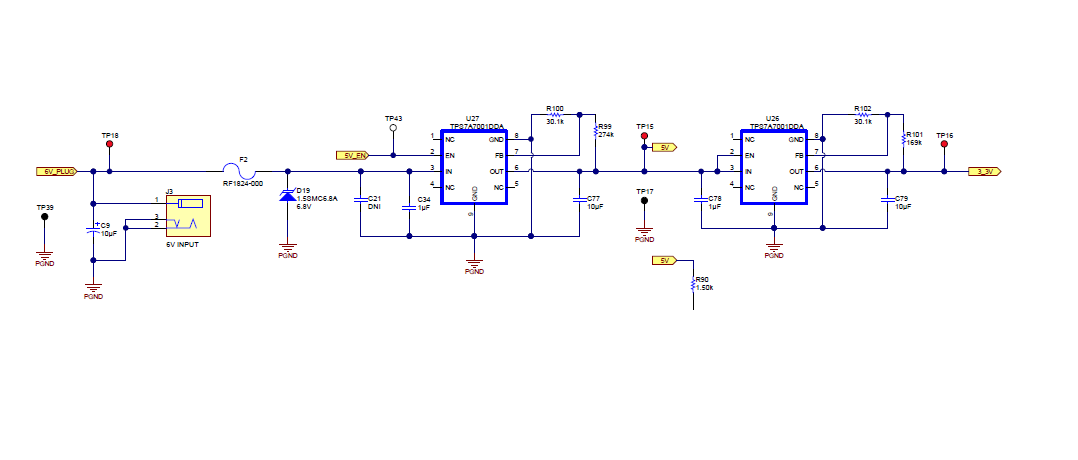Hello Buddy:
Input 6.5V/2.5A and get 3.3V output voltage.
Why used 2pcs TPS7A7001DDA devices for this application?
Whehter used 1pcs TPS7A7001DDA device for this case by adjustment R1/R2 value?
This device current limit range from 500mA to 2A. Is it right?

